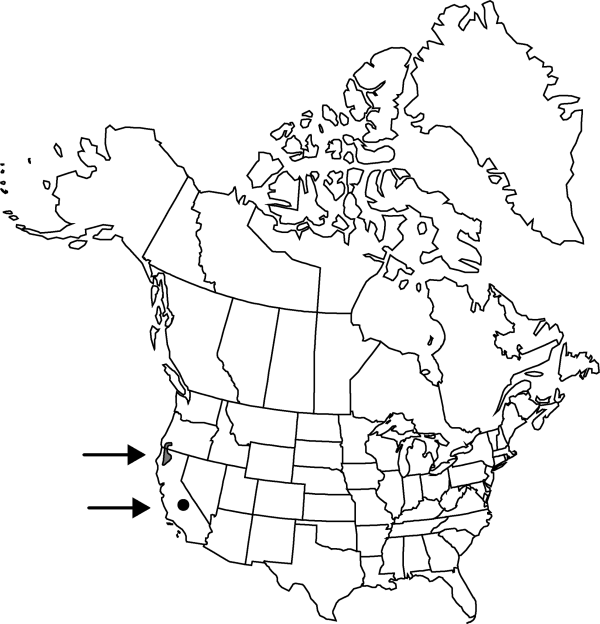Lewisia leeana
in A. Gray et al., Syn. Fl. N. Amer. 1: 269. 1897.
Taproots gradually ramified distally. Stems spreading or suberect, 8–20 cm. Leaves: basal leaves evergreen, sessile, blade linear, ± terete, 1.5–6 cm, margins entire, apex obtuse; cauline leaves alternate, intergrading with bracts, blade narrowly lanceolate, 5 mm, margins entire, apex acute. Inflorescences paniculate cymes, 50–70 (–100) -flowered; bracts several, alternate proximally, 2 at each flowering node distally, ovate to narrowly lanceolate, 2–5 mm, margins glandular-toothed, apex acute. Flowers pedicellate, not disarticulate in fruit; sepals 2, suborbiculate, 1–4 mm, herbaceous at anthesis, margins glandular-toothed, apex truncate; petals 5–8, magenta, lavender, or white with or without magenta veins, obovate, 5–7 mm; stamens 4–8; stigmas 2; pedicel 3–15 mm. Capsules 4–5 mm. Seeds 1–2, 2–2.5 mm, shiny, smooth. 2n = 14.
Phenology: Flowering summer.
Habitat: Open north- or northwest-facing granitic or serpentine slopes or cliffs
Elevation: 1300-3400 m
Discussion
Lewisia leeana is known only from northwestern California and southwesternmost Oregon, and a disjunct population in Fresno County, California. As discussed by B. Mathew (1989b), Lewisia ×whiteae Purdy (California) is a natural, constantly recurring hybrid between L. leeana and L. cotyledon. In their narrowly spatulate leaves, the hybrids resemble L. columbiana out of range (cf. L. T. Dempster 1993); the flowers are reportedly more deeply colored.
Selected References
None.
Lower Taxa
"broad" is not a number.
